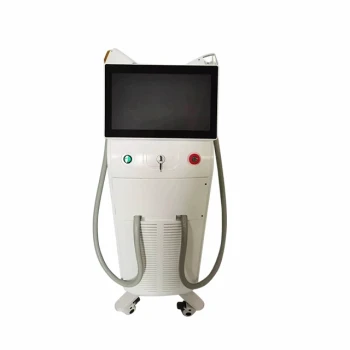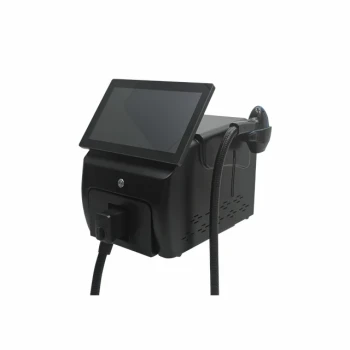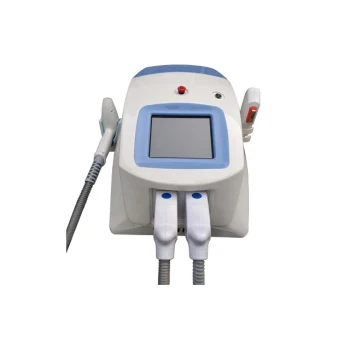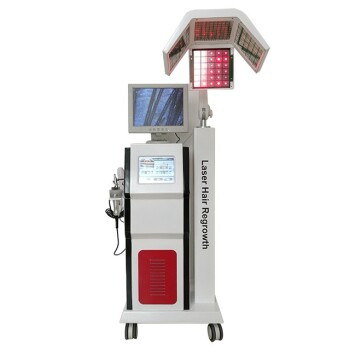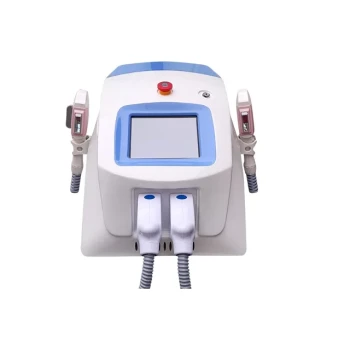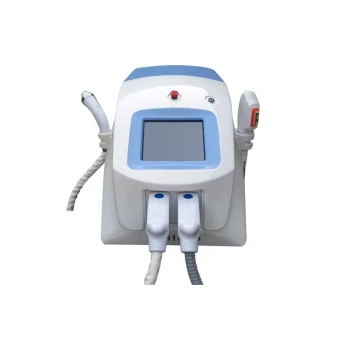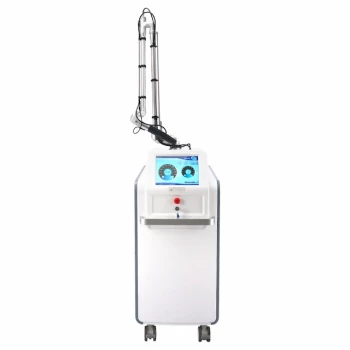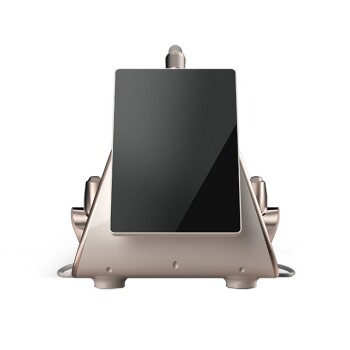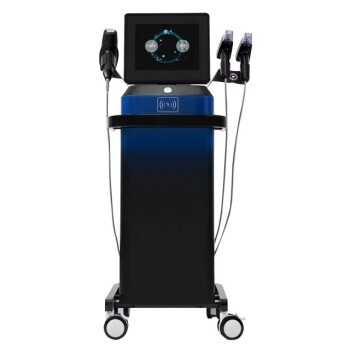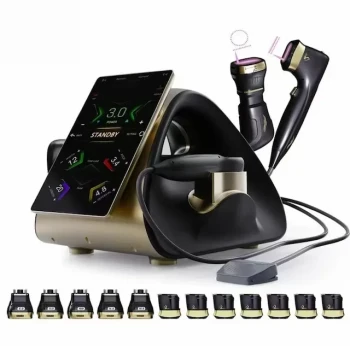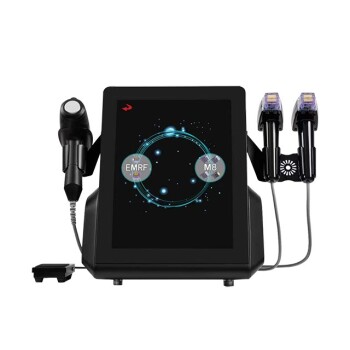Yes, the diode laser is a highly effective and widely used technology for hair removal. It is considered one of the gold standards in the industry, capable of achieving significant, long-term hair reduction for suitable candidates. While it involves minimal discomfort, its success is dependent on several key factors, most notably the contrast between your skin and hair color.
The core principle of the diode laser's effectiveness lies in its specific wavelength, which is optimized to target the pigment in the hair follicle. This makes it a powerful tool, but its success is not universal; it is a function of a good candidate, skilled application, and realistic expectations.
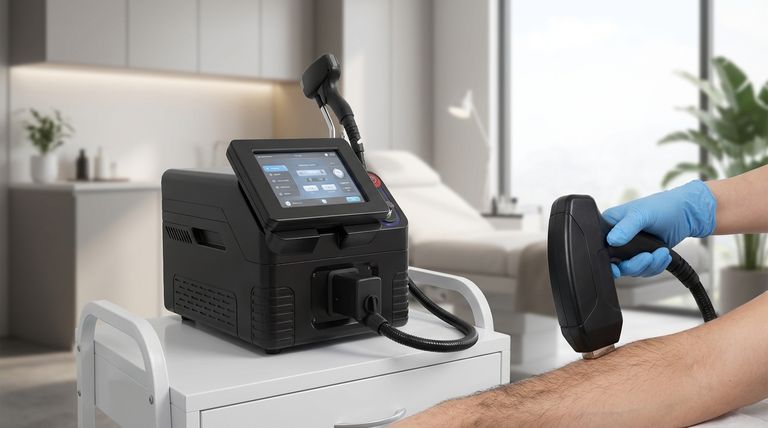
How Diode Lasers Achieve Hair Reduction
To understand its effectiveness, you must first understand the mechanism. The process is a precise application of science designed to disable hair growth at the source.
The Principle of Selective Photothermolysis
The entire basis for laser hair removal is a principle called selective photothermolysis. In simple terms, this means using a specific wavelength of light (photo) to heat (thermo) and destroy a target (lysis) without damaging the surrounding tissue.
The diode laser emits a concentrated beam of light that is absorbed by the melanin (the pigment) in your hair follicle. This light energy converts to heat, which damages the follicle and inhibits its ability to grow new hair.
The 810 nm Wavelength Advantage
Diode lasers typically operate at a wavelength of around 810 nanometers (nm). This wavelength is a crucial part of its success.
It strikes an ideal balance: it penetrates deep enough into the skin to reach the base of the hair follicle, while also being strongly absorbed by the melanin within that follicle. This precise targeting is what makes it so efficient.
The Role of Hair Growth Cycles
Your hair does not grow continuously. It cycles through three phases: Anagen (active growth), Catagen (transition), and Telogen (resting).
Laser hair removal is only effective on hairs in the Anagen phase, when the hair is actively attached to the follicle. Because only a fraction of your hair is in this phase at any given time, multiple sessions are required to target all follicles as they enter the growth stage.
Who Is the Ideal Candidate?
The effectiveness of a diode laser is not the same for everyone. The technology works best under specific conditions.
The Importance of Pigment Contrast
The laser cannot distinguish between pigment in your hair and pigment in your skin. Therefore, the ideal scenario is a high contrast between the two: dark hair and light skin.
This allows the laser energy to be absorbed primarily by the hair follicle, minimizing the risk of damage to the surrounding skin.
Why It's Ineffective for Light Hair
If you have very light blonde, red, or grey hair, a diode laser will be largely ineffective. This is because there is little to no melanin in the hair follicle for the laser to target. The energy simply passes through without being absorbed.
Considerations for Darker Skin Tones
Historically, laser hair removal was risky for individuals with darker skin tones (Fitzpatrick types V and VI). The laser could inadvertently target the melanin in the skin, leading to burns or pigmentation issues.
However, modern diode lasers often include adjustments like longer pulse durations and advanced cooling systems. These features allow a skilled technician to safely and effectively treat darker skin, but it makes the choice of a qualified and experienced provider absolutely critical.
Understanding the Trade-offs and Realities
To make an informed decision, you must be aware of the limitations and what to realistically expect from the treatment.
Long-Term Reduction, Not Permanent Removal
The FDA has cleared laser hair removal for "permanent hair reduction," not "permanent hair removal." This is a critical distinction.
An effective treatment course will result in a significant and stable reduction in the number of coarse hairs. However, it may not eliminate every single hair forever. Some follicles may eventually recover and produce a finer, lighter hair, and occasional maintenance sessions may be needed.
The Sensation: Is It Painful?
The reference to "minimal discomfort" is accurate for most people. The sensation is often described as a quick snap of a rubber band against the skin.
Virtually all modern diode lasers have integrated cooling systems, such as a chilled sapphire tip, that touches your skin just before the laser pulse. This pre-cools the area, dramatically improving comfort and protecting the skin's surface.
Potential Side Effects
The most common side effects are temporary and mild, including redness and slight swelling around the treated follicles, similar to a minor sunburn. These typically resolve within a few hours.
In rare cases, or if performed by an unqualified technician, more serious side effects like burns, blisters, or changes in skin pigmentation (either darkening or lightening) can occur.
Making the Right Choice for Your Goal
To determine if a diode laser is the right choice, align the technology's strengths with your personal characteristics and goals.
- If your primary focus is removing dark hair on light to medium skin: A diode laser is one of the most effective, efficient, and well-proven options available to you.
- If your primary focus is treating darker skin tones: A diode laser can be effective, but your priority must be finding a provider with modern equipment and specific experience treating your skin type to ensure safety.
- If you have very light blonde, grey, or red hair: You should explore other hair removal methods, as a diode laser will not be effective due to the lack of pigment in the hair.
Ultimately, the effectiveness of a diode laser is a direct result of matching the right technology to the right candidate under the guidance of an expert.
Summary Table:
| Factor | Impact on Effectiveness |
|---|---|
| Hair Color | Most effective on dark hair (high melanin). Ineffective on blonde/red/grey hair. |
| Skin Tone | Ideal for light skin. Can be used on darker skin with advanced tech & expert application. |
| Treatment Goal | Achieves permanent hair reduction, not complete removal. Multiple sessions are required. |
| Key Advantage | 810nm wavelength deeply penetrates to target follicles with minimal discomfort. |
Ready to offer your clients superior hair removal results?
BELIS specializes in professional medical aesthetic equipment, providing clinics and premium beauty salons with advanced diode laser systems. Our technology ensures effective, safe treatments for a wide range of skin types, helping you enhance client satisfaction and grow your business.
Contact our experts today to find the perfect diode laser solution for your practice.
Visual Guide
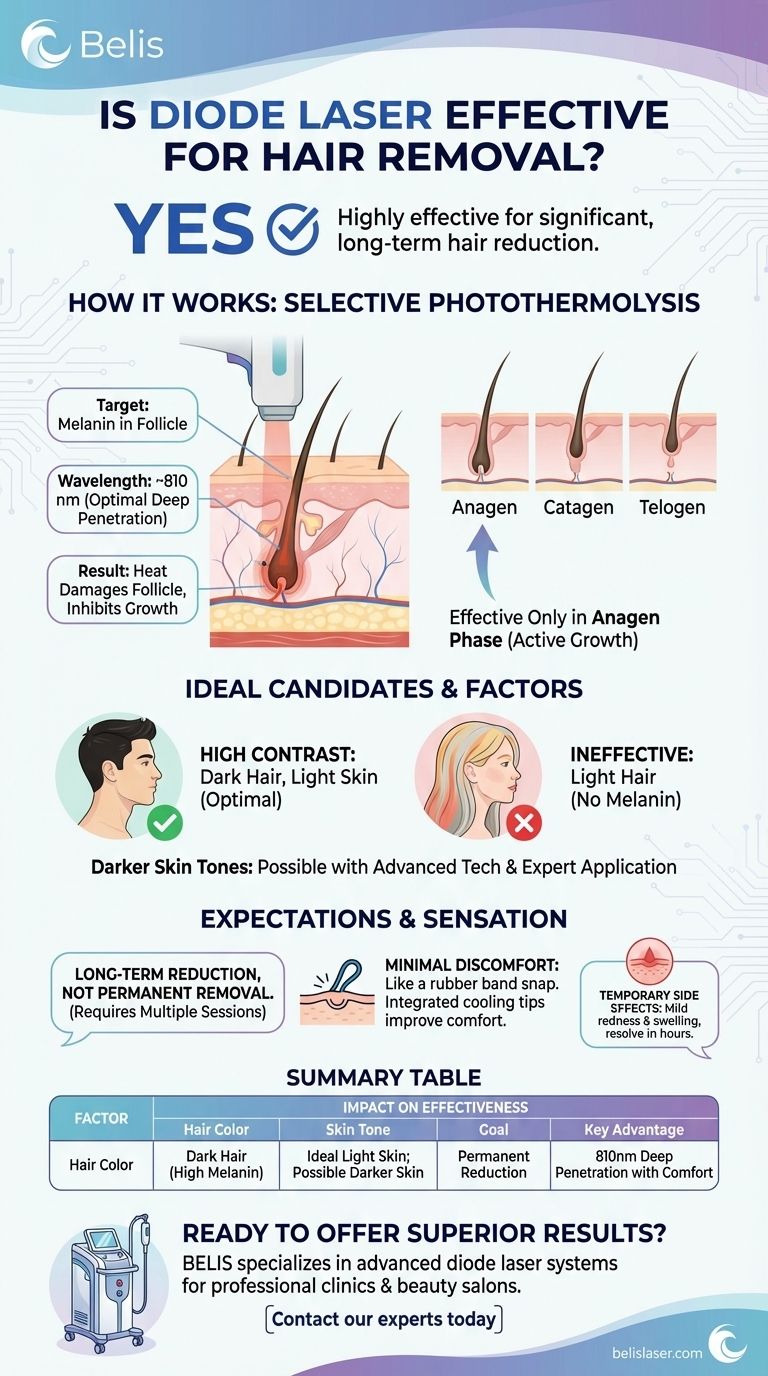
Related Products
- Diode Laser SHR Trilaser Hair Removal Machine for Clinic Use
- Clinic Diode Laser Hair Removal Machine with SHR and Trilaser Technology
- Diode Tri Laser Hair Removal Machine for Clinic Use
- Trilaser Diode Hair Removal Machine for Beauty Clinic Use
- Clinic Use IPL and SHR Hair Removal Machine with Nd Yag Laser Tattoo Removal
People Also Ask
- What are the disadvantages of diode laser hair removal? Key Limitations & Safety Risks Explained
- Can diode laser remove hair permanently? Achieve Long-Term Hair Reduction with Precision Technology
- How effective is diode laser hair removal? Achieve Long-Term Hair Reduction Safely
- Does diode laser remove hair permanently? Understanding Permanent Hair Reduction
- Which is better, an IPL or a diode laser? Unlock Precision for Permanent Hair Reduction


